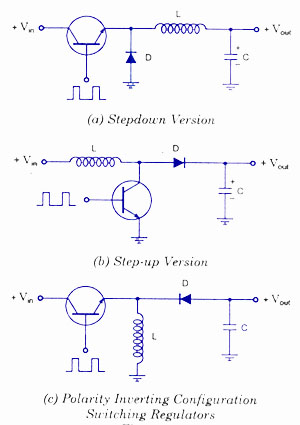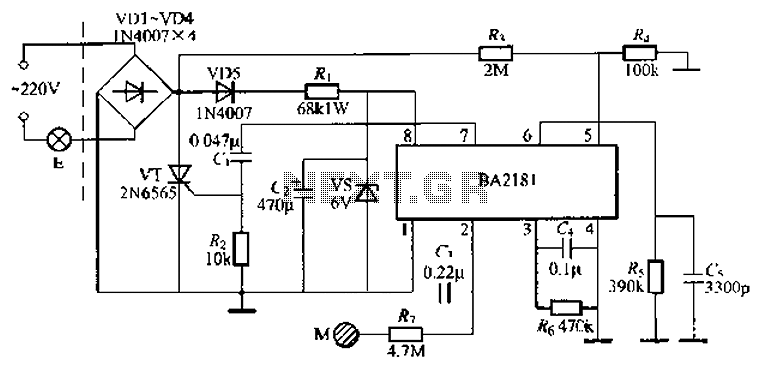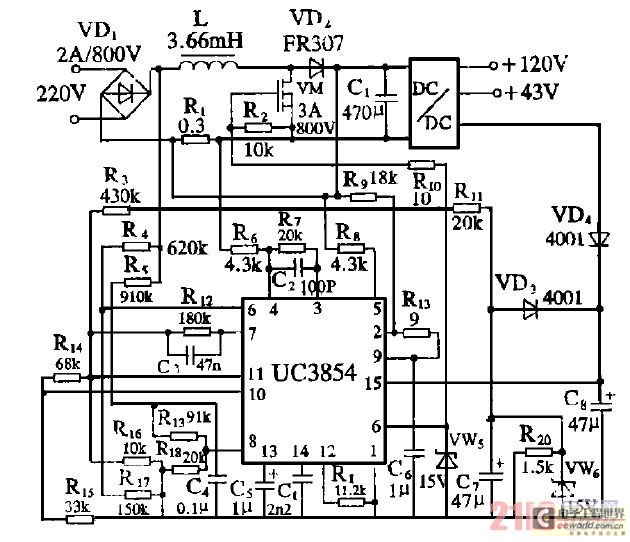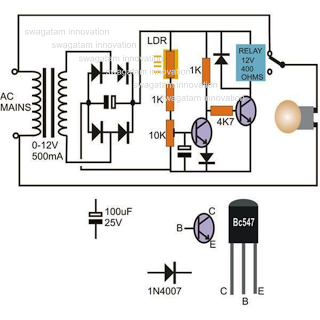
On/Off Touch Switch
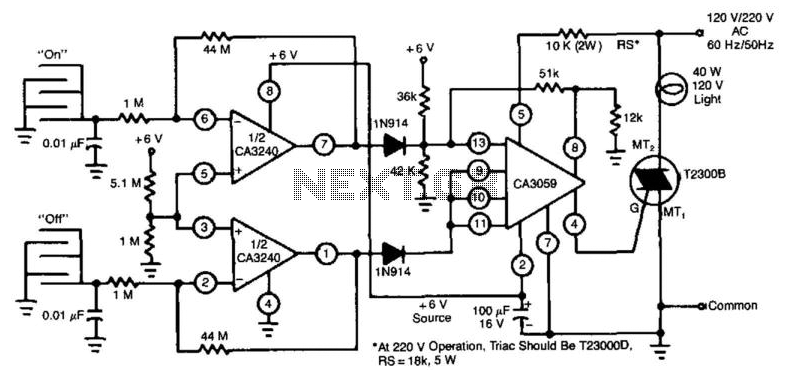
This circuit employs a CA3240 dual BiMOS operational amplifier to detect small currents that flow between the contact points on a touch plate. The high input impedance of the CA3240 enables the use of 1-megaohm resistors in series with the touch plates to ensure user safety. A positive output from either pin 7 (ON) or pin 1 (OFF) of the CA3240 activates the CA3059 zero-voltage switch, which subsequently latches the triac on or turns it off. The internal power supply of the CA3059 provides power to the CA3240.
The circuit design features a CA3240 dual BiMOS op-amp, which is characterized by its high input impedance and low output distortion, making it well-suited for sensing small currents. The op-amp is configured in a non-inverting mode to amplify the minute voltage changes occurring across the touch plate due to user interaction. The touch plate is connected to the op-amp inputs via high-value resistors (1 MΩ). This configuration not only enhances the sensitivity of the circuit but also ensures that the current flowing through the touch plate remains at a safe level for users.
When a user touches the plate, a small current flows through the resistors, generating a corresponding voltage at the op-amp inputs. The CA3240 processes this input signal and, depending on the detected voltage level, provides a positive output signal on either pin 7 or pin 1. The output from the op-amp is then used to control the CA3059 zero-voltage switch, which is designed to switch on or off without causing voltage spikes, thus protecting downstream components.
The CA3059 is a specialized switch that can latch a triac in the on state or turn it off based on the signals received from the CA3240. This capability is critical for applications where electrical isolation and control of AC loads are necessary. The internal power supply of the CA3059 powers the CA3240, ensuring that the entire circuit operates efficiently without requiring additional external power sources.
Overall, this circuit effectively combines the high sensitivity of the CA3240 op-amp with the robust switching capabilities of the CA3059, resulting in a reliable touch-sensitive control mechanism suitable for various electronic applications. This circuit uses a CA3240 dual BiMOS op amp to sense small currents flowing between the contact points on a touch plat e. The high input impedance of the CA3240 allows the use of 1- resistors in series with the touch plates to ensure user safety. A positive output on either pin 7 (ON) or pin 1 (OFF) of the CA3240 actuates the CA3059 zero-voltage switch, which then latches the triac on or turns it off.
The internal power supply of the CA3059 powers the CA3240.
The circuit design features a CA3240 dual BiMOS op-amp, which is characterized by its high input impedance and low output distortion, making it well-suited for sensing small currents. The op-amp is configured in a non-inverting mode to amplify the minute voltage changes occurring across the touch plate due to user interaction. The touch plate is connected to the op-amp inputs via high-value resistors (1 MΩ). This configuration not only enhances the sensitivity of the circuit but also ensures that the current flowing through the touch plate remains at a safe level for users.
When a user touches the plate, a small current flows through the resistors, generating a corresponding voltage at the op-amp inputs. The CA3240 processes this input signal and, depending on the detected voltage level, provides a positive output signal on either pin 7 or pin 1. The output from the op-amp is then used to control the CA3059 zero-voltage switch, which is designed to switch on or off without causing voltage spikes, thus protecting downstream components.
The CA3059 is a specialized switch that can latch a triac in the on state or turn it off based on the signals received from the CA3240. This capability is critical for applications where electrical isolation and control of AC loads are necessary. The internal power supply of the CA3059 powers the CA3240, ensuring that the entire circuit operates efficiently without requiring additional external power sources.
Overall, this circuit effectively combines the high sensitivity of the CA3240 op-amp with the robust switching capabilities of the CA3059, resulting in a reliable touch-sensitive control mechanism suitable for various electronic applications. This circuit uses a CA3240 dual BiMOS op amp to sense small currents flowing between the contact points on a touch plat e. The high input impedance of the CA3240 allows the use of 1- resistors in series with the touch plates to ensure user safety. A positive output on either pin 7 (ON) or pin 1 (OFF) of the CA3240 actuates the CA3059 zero-voltage switch, which then latches the triac on or turns it off.
The internal power supply of the CA3059 powers the CA3240.
